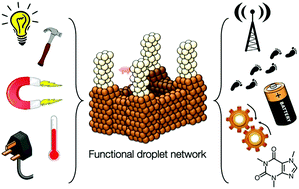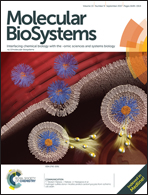Functional aqueous droplet networks
Abstract
Droplet interface bilayers (DIBs), comprising individual lipid bilayers between pairs of aqueous droplets in an oil, are proving to be a useful tool for studying membrane proteins. Recently, attention has turned to the elaboration of networks of aqueous droplets, connected through functionalized interface bilayers, with collective properties unachievable in droplet pairs. Small 2D collections of droplets have been formed into soft biodevices, which can act as electronic components, light-sensors and batteries. A substantial breakthrough has been the development of a droplet printer, which can create patterned 3D droplet networks of hundreds to thousands of connected droplets. The 3D networks can change shape, or carry electrical signals through defined pathways, or express proteins in response to patterned illumination. We envisage using functional 3D droplet networks as autonomous synthetic tissues or coupling them with cells to repair or enhance the properties of living tissues.



 Please wait while we load your content...
Please wait while we load your content...